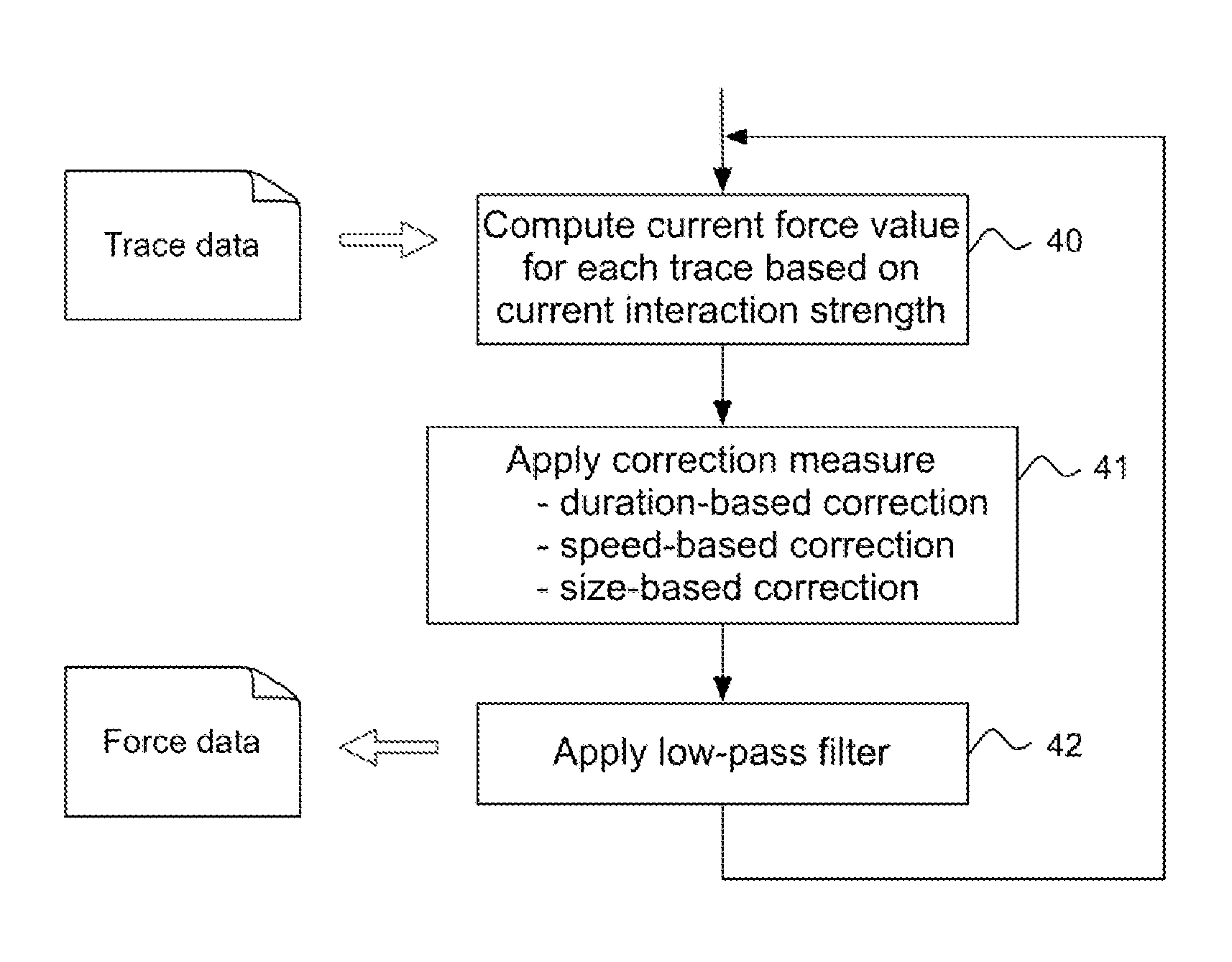Touch force estimation in an FTIR-based projection-type touch-sensing apparatus
a touch-sensing apparatus and projection-type technology, applied in the field of estimation, can solve the problems of difficult to detect changes in size with sufficient accuracy, exhibit relatively small deformation with increased application force, and limited use of changes in touch area for force estimation, so as to reduce unwanted variability, increase the current speed of the touching object, and introduce unwanted latency
- Summary
- Abstract
- Description
- Claims
- Application Information
AI Technical Summary
Benefits of technology
Problems solved by technology
Method used
Image
Examples
Embodiment Construction
[0055]Before describing embodiments of the invention, a few definitions will be given.
[0056]A “touch object” or “touching object” is a physical object that touches, or is brought in sufficient proximity to, a touch surface so as to be detected by one or more sensors in the touch system. The physical object may be animate or inanimate.
[0057]An “interaction” occurs when the touch object affects a parameter measured by the sensor.
[0058]An “interaction strength” is a relative or absolute measure of the degree of interaction. The “interaction strength” may be represented as an “attenuation”.
[0059]An “interaction map” or “interaction pattern” is a two-dimensional (2D) distribution of interaction strength across the touch surface, or a portion thereof. If the interaction is presented as attenuation, the interaction map / pattern is also denoted an “attenuation map” or “attenuation pattern”.
[0060]A “touch” denotes a point of interaction as seen in the interaction pattern.
[0061]A “frame” or “i...
PUM
 Login to View More
Login to View More Abstract
Description
Claims
Application Information
 Login to View More
Login to View More - R&D
- Intellectual Property
- Life Sciences
- Materials
- Tech Scout
- Unparalleled Data Quality
- Higher Quality Content
- 60% Fewer Hallucinations
Browse by: Latest US Patents, China's latest patents, Technical Efficacy Thesaurus, Application Domain, Technology Topic, Popular Technical Reports.
© 2025 PatSnap. All rights reserved.Legal|Privacy policy|Modern Slavery Act Transparency Statement|Sitemap|About US| Contact US: help@patsnap.com



